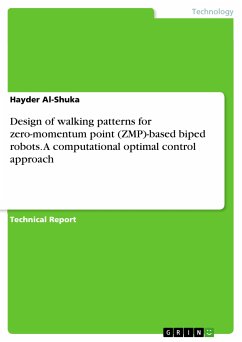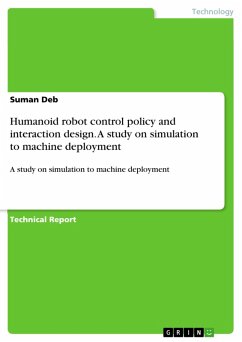Academic Paper from the year 2017 in the subject Engineering - Robotics, , language: English, abstract: Researchers dream of developing autonomous humanoid robots which behave/walk like a human being. Biped robots, although complex, have the greatest potential for use in human-centered environments such as the home or office. Studying biped robots is also important for understanding human locomotion and improving control strategies for prosthetic and orthotic limbs. Control systems of humans walking in cluttered environments are complex, however, and may involve multiple local controllers and commands from the cerebellum. Although biped robots have been of interest over the last four decades, no unified stability/balance criterion adopted for stabilization of miscellaneous walking/running modes of biped robots has so far been available. The literature is scattered and it is difficult to construct a unified background for the balance strategies of biped motion. The zero-moment point (ZMP) criterion, however, is a conservative indicator of stabilized motion for a class of biped robots. Therefore, we offer a systematic presentation of multi-level balance controllers for stabilization and balance recovery of ZMP-based humanoid robots.
Dieser Download kann aus rechtlichen Gründen nur mit Rechnungsadresse in A, B, BG, CY, CZ, D, DK, EW, E, FIN, F, GR, HR, H, IRL, I, LT, L, LR, M, NL, PL, P, R, S, SLO, SK ausgeliefert werden.









